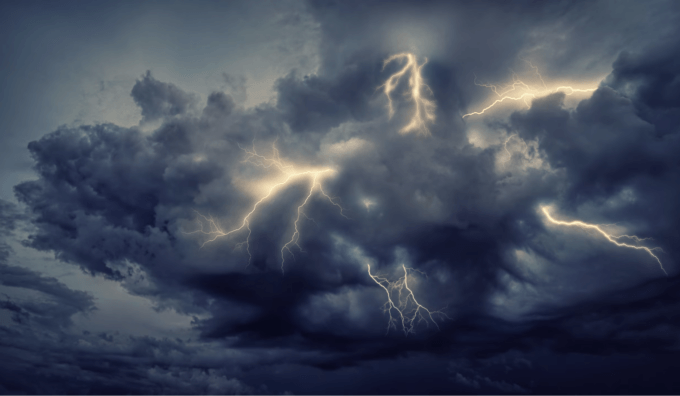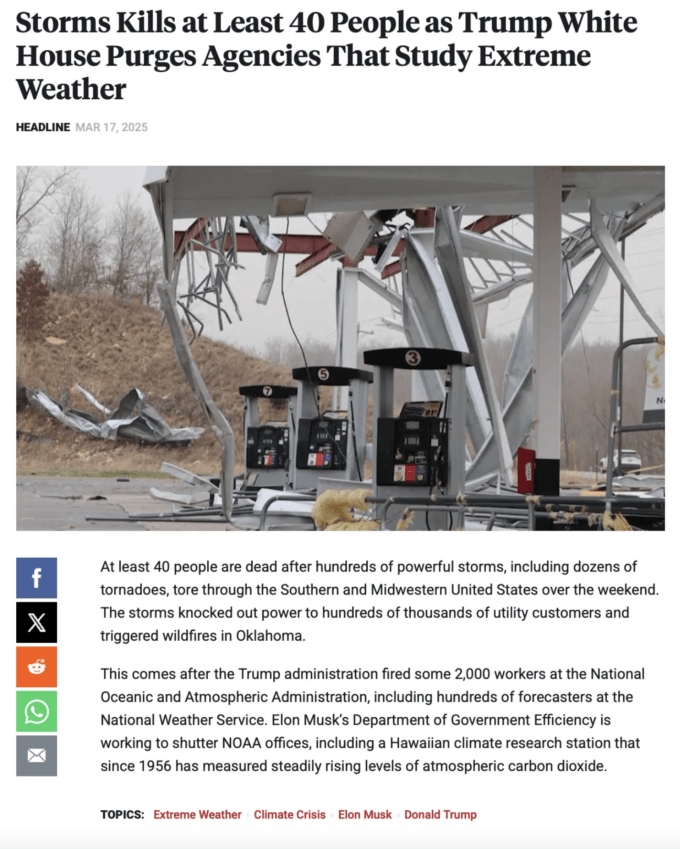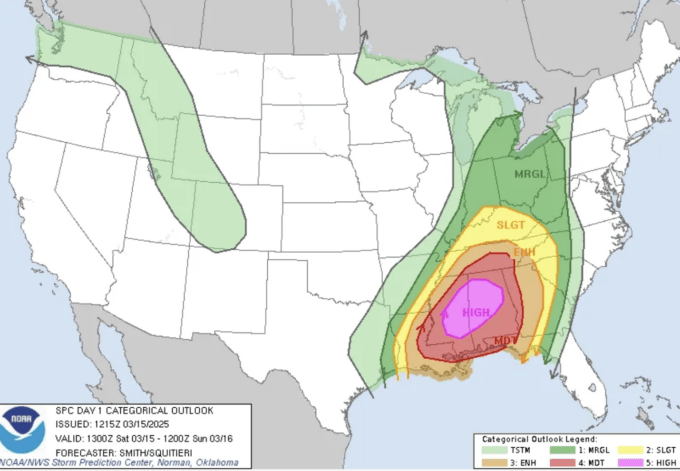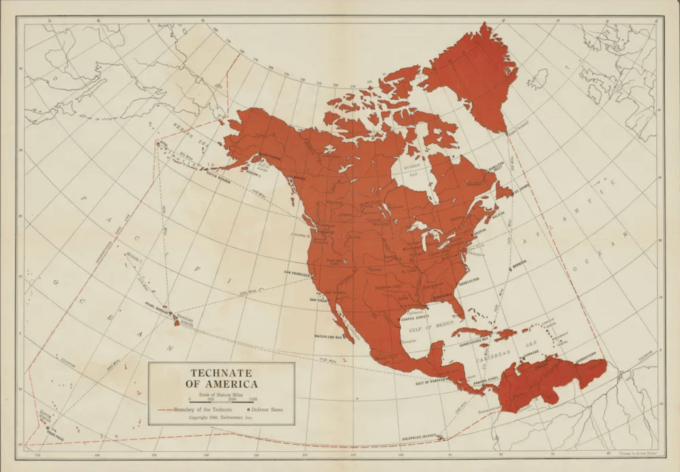Severe Storms, Climate Denial and Greenland

Photo by Johannes Plenio
As I initially typed this, a week ago, it was raining outside, the outer remnants of the massive storm system that made its way through the center and south of the country the week before last—a reminder that in the midst of the cartoonish political events we’re living, severe climate change is only ramping up. The intensity of the storms is difficult to grasp and included three EF4 tornadoes, meaning winds from 166 to 200 miles per hour. The devastation is staggering:

I read some National Weather Service reports before and during the storm and still find myself a little surprised that the reports are available. It’s been two months. But NOAA is being gutted, and an explicit goal of so-called project 2025 is the privatization of the National Weather Service.

By this point last weekend’s destruction has (unsurprisingly) vanished from national news. The absence of the off-the-charts climate situation from collective consciousness continues to baffle me, though I recognize there exists something like collective inoculation to it. Climate change (particularly; the broader environmental crisis more nebulously) was treated more seriously seven or eight years ago than it is today. Part of this was likely due to an environment in which more of this society was united in objection to the right, whose insistence over the last half decade has bred cynicism and remade national politics in its image. The inability of liberalism to articulate or enact anything like a positive or realistic vision of the future has only abetted that.

But the lack of seriousness around climate change is also due, I think, to the severity of the problem itself. Without quite acknowledging it, society has moved on from the idea that disastrous climate upheaval is somehow in the future—not true even a decade ago, but having some sort of collective psychic utility—to the implicit recognition that we are living it.
Paradoxically this has toned down the urgency, in part for obvious pragmatic reasons: we’re not “doing anything,” we must bear it, we can’t scream pointlessly about it every day. But I think the worsening situation has also ramped up inner defenses; denial seems to become more entrenched as the problem gets more absurdly catastrophic, probably exactly because it’s so terrifying. It is an unbearable phenomenon to meaningfully face and we are stuck in the middle of it—what else to do?
Well, maybe try to at least be somewhat sober about it. I recently read this Elizabeth Kolbert article from last year, about a visit she made to Greenland. (This was before Greenland was regularly in American news.) It’s a pretty good piece, overall, and Kolbert’s descriptions of the vastness of the ice sheet give some sense not only of the geologic proportions we’re dealing with but also the challenge of meaningfully relating the enormity of the problem:
The Greenland ice sheet has the shape of a dome, with Summit resting at the very top. The ice dome is so immense that it’s hard to picture, even if you’ve flown across it. It extends over more than six hundred and fifty thousand square miles—an area roughly the size of Alaska—and in the middle it is two miles tall. It is massive enough to depress the Earth’s crust and to exert a significant gravitational pull on the oceans. If all of Greenland’s ice were cut into one-inch cubes and these were piled one on top of another, the stack would reach Alpha Centauri. If it melted—a rather more plausible scenario—global sea levels would rise by twenty feet.
Kolbert did not touch on this, but Greenland’s recent appearance in American media is not unconnected, even if climate explicitly has not been part of the public “discussion.” Joshua Frank wrote about this in a piece last month for TomDispatch:
This brings us back to what this imperialist struggle is all about. The island is loaded with critical minerals, including rare earth minerals, lithium, graphite, copper, nickel, zinc, and other materials used in green technologies. Some estimates suggest that Greenland has six million tons of graphite, 106 kilotons of copper, and 235 kilotons of lithium. It holds 25 of the 34 minerals in the European Union’s official list of critical raw materials, all of which exist along its rocky coastline, generally accessible for mining operations. Unsurprisingly, such enormous mineral wealth has made Greenland of interest to China, Russia, and — yep — President Trump, too…
…Right now, in this geopolitical chess game, graphite might be the most valuable of all the precious minerals Greenland has to offer. The Amitsoq graphite project in the Nanortalik region of southern Greenland could be the most significant prize of all. Considered to be pure, the “spherical” graphite deposit at the mine there may prove to be the most profitable one in the world. Right now, GreenRoc Mining, based in London, is trying to fast-track work there, hoping to undercut China’s interest in Greenland’s resources to feed Europe’s green energy boom. The profits from that mine could exceed $2 billion. Currently, spherical graphite is only mined in China and is the graphite of choice for the anodes (a polarized electrical device) crucial to lithium-ion battery production.
What does this portend? We don’t yet know, maybe, but it’s no joke. In an recent interview with Ross Douthat, Steve Bannon referred to Trump’s vision of “hemispheric defense,” from Greenland to Panama,1 and I think we ought to seriously consider the crude but possibly focusing vision of a United States of America, in the era of climate breakdown, that shrinks on the world stage—a process long underway, by the way, and a bipartisan project, explicitly or not—while simultaneously compensating through a reassertion of power and potentially even explicit imperialism closer to home.
A modern version of the Technocracy Movement? Let’s hope not. Whatever the medium- and longer-term futures, the rapid onset of spring in the Northeast (relieved this week by the nice cold spell we’re having), plus this latest batch of storms, has got me wondering what sort of weather shocks the coming warm season will bring…
LA REVUE GAUCHE - Left Comment: Search results for TECHNOCRACY

On a brief and plausibly brighter note, I want to give a shout-out to Mitch Horowitz, who has a new book out today: Practical Magick. Mitch is an extremely prolific author and historian who writes about consciousness, the occult, and a lot of other mysterious topics modernity seems either unable to integrate or outright rejects. Lest you be unnerved by the Crowley-an title, Mitch’s writing stands out for its fundamentally sober, journalistic engagement with the material. I have not finished the advance copy he sent me, but the book’s an impressive blend of interrogated history and hands-on, practical techniques. In this era of worsening economic and social brutality, I believe his focus on and methods for more meaningful living are valuable. Some tangible and grounded faith—not the blind idiotic dogma that some people associate with the word—may be important in resisting this moment’s crude hellishness. A sentence sticks out: “not knowing the ultimate basis of reality, all of us, at a certain point, abide maybes.”
Buy his new book here, and read the last interview we did together.
Notes
1. Orwell didn’t exactly nail it, maybe, with respect to regional and growing powers like Turkey and India (and we’ll see what happens to Europe), but still we have a situation of global geopolitics not wholly unlike the tripartite structure in 1984, a world divided mostly between Eurasia, Eastasia, and Oceania, who fight perpetually but not definitively over the middle spaces in between.
This piece first appeared at Nor’easter.
No comments:
Post a Comment